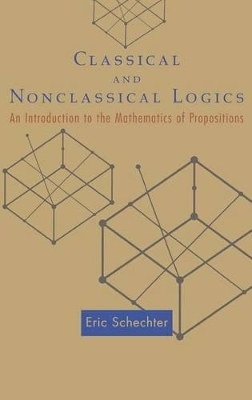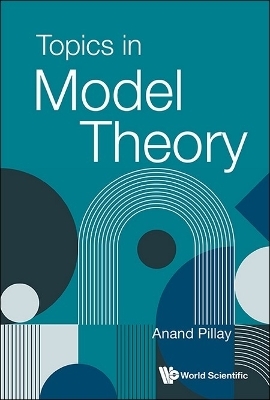
Classical and Nonclassical Logics
Princeton University Press (Verlag)
9780691122793 (ISBN)
So-called classical logic--the logic developed in the early twentieth century by Gottlob Frege, Bertrand Russell, and others--is computationally the simplest of the major logics, and it is adequate for the needs of most mathematicians. But it is just one of the many kinds of reasoning in everyday thought. Consequently, when presented by itself--as in most introductory texts on logic--it seems arbitrary and unnatural to students new to the subject. In Classical and Nonclassical Logics, Eric Schechter introduces classical logic alongside constructive, relevant, comparative, and other nonclassical logics. Such logics have been investigated for decades in research journals and advanced books, but this is the first textbook to make this subject accessible to beginners. While presenting an assortment of logics separately, it also conveys the deeper ideas (such as derivations and soundness) that apply to all logics. The book leads up to proofs of the Disjunction Property of constructive logic and completeness for several logics.
The book begins with brief introductions to informal set theory and general topology, and avoids advanced algebra; thus it is self-contained and suitable for readers with little background in mathematics. It is intended primarily for undergraduate students with no previous experience of formal logic, but advanced students as well as researchers will also profit from this book.
Eric Schechter, Associate Professor of Mathematics at Vanderbilt University, is the author of "Handbook of Analysis and Its Foundations".
A Preliminaries 1 Chapter 1: Introduction for teachers 3 Purpose and intended audience, 3 Topics in the book, 6 Why pluralism?, 13 Feedback, 18 Acknowledgments, 19 Chapter 2: Introduction for students 20 Who should study logic?, 20 Formalism and certication, 25 Language and levels, 34 Semantics and syntactics, 39 Historical perspective, 49 Pluralism, 57 Jarden's example (optional), 63 Chapter 3: Informal set theory 65 Sets and their members, 68 Russell's paradox, 77 Subsets, 79 Functions, 84 The Axiom of Choice (optional), 92 Operations on sets, 94 Venn diagrams, 102 Syllogisms (optional), 111 Infinite sets (postponable), 116 Chapter 4: Topologies and interiors (postponable) 126 Topologies, 127 Interiors, 133 Generated topologies and finite topologies (optional), 139 Chapter 5: English and informal classical logic 146 Language and bias, 146 Parts of speech, 150 Semantic values, 151 Disjunction (or), 152 Conjunction (and), 155 Negation (not), 156 Material implication, 161 Cotenability, fusion, and constants (postponable), 170 Methods of proof, 174 Working backwards, 177 Quantifiers, 183 Induction, 195 Induction examples (optional), 199 Chapter 6: Definition of a formal language 206 The alphabet, 206 The grammar, 210 Removing parentheses, 215 Defined symbols, 219 Prefix notation (optional), 220 Variable sharing, 221 Formula schemes, 222 Order preserving or reversing subformulas (postponable), 228 B Semantics 233 Chapter 7: Definitions for semantics 235 Interpretations, 235 Functional interpretations, 237 Tautology and truth preservation, 240 Chapter 8: Numerically valued interpretations 245 The two-valued interpretation, 245 Fuzzy interpretations, 251 Two integer-valued interpretations, 258 More about comparative logic, 262 More about Sugihara's interpretation, 263 Chapter 9: Set-valued interpretations 269 Powerset interpretations, 269 Hexagon interpretation (optional), 272 The crystal interpretation, 273 Church's diamond (optional), 277 Chapter 10: Topological semantics (postponable) 281 Topological interpretations, 281 Examples, 282 Common tautologies, 285 Nonredundancy of symbols, 286 Variable sharing, 289 Adequacy of finite topologies (optional), 290 Disjunction property (optional), 293 Chapter 11: More advanced topics in semantics 295 Common tautologies, 295 Images of interpretations, 301 Dugundji formulas, 307 C Basic syntactics 311 Chapter 12: Inference systems 313 Chapter 13: Basic implication 318 Assumptions of basic implication, 319 A few easy derivations, 320 Lemmaless expansions, 326 Detachmental corollaries, 330 Iterated implication (postponable), 332 Chapter 14: Basic logic 336 Further assumptions, 336 Basic positive logic, 339 Basic negation, 341 Substitution principles, 343 D One-formula extensions 349 Chapter 15: Contraction 351 Weak contraction, 351 Contraction, 355 Chapter 16: Expansion and positive paradox 357 Expansion and mingle, 357 Positive paradox (strong expansion), 359 Further consequences of positive paradox, 362 Chapter 17: Explosion 365 Chapter 18: Fusion 369 Chapter 19: Not-elimination 372 Not-elimination and contrapositives, 372 Interchangeability results, 373 Miscellaneous consequences of not-elimination, 375 Chapter 20: Relativity 377 E Soundness and major logics 381 Chapter 21: Soundness 383 Chapter 22: Constructive axioms: avoiding not-elimination 385 Constructive implication, 386 Herbrand-Tarski Deduction Principle, 387 Basic logic revisited, 393 Soundness, 397 Nonconstructive axioms and classical logic, 399 Glivenko's Principle, 402 Chapter 23: Relevant axioms: avoiding expansion 405 Some syntactic results, 405 Relevant deduction principle (optional), 407 Soundness, 408 Mingle: slightly irrelevant, 411 Positive paradox and classical logic, 415 Chapter 24: Fuzzy axioms: avoiding contraction 417 Axioms, 417 Meredith's chain proof, 419 Additional notations, 421 Wajsberg logic, 422 Deduction principle for Wajsberg logic, 426 Chapter 25: Classical logic 430 Axioms, 430 Soundness results, 431 Independence of axioms, 431 Chapter 26: Abelian logic 437 F Advanced results 441 Chapter 27: Harrop's principle for constructive logic 443 Meyer's valuation, 443 Harrop's principle, 448 The disjunction property, 451 Admissibility, 451 Results in other logics, 452 Chapter 28: Multiple worlds for implications 454 Multiple worlds, 454 Implication models, 458 Soundness, 460 Canonical models, 461 Completeness, 464 Chapter 29: Completeness via maximality 466 Maximal unproving sets, 466 Classical logic, 470 Wajsberg logic, 477 Constructive logic, 479 Non-finitely-axiomatizable logics, 485 References 487 Symbol list 493 Index 495
| Erscheint lt. Verlag | 28.8.2005 |
|---|---|
| Zusatzinfo | 39 line illus. |
| Verlagsort | New Jersey |
| Sprache | englisch |
| Maße | 152 x 235 mm |
| Gewicht | 879 g |
| Themenwelt | Mathematik / Informatik ► Mathematik ► Logik / Mengenlehre |
| ISBN-13 | 9780691122793 / 9780691122793 |
| Zustand | Neuware |
| Informationen gemäß Produktsicherheitsverordnung (GPSR) | |
| Haben Sie eine Frage zum Produkt? |
aus dem Bereich


